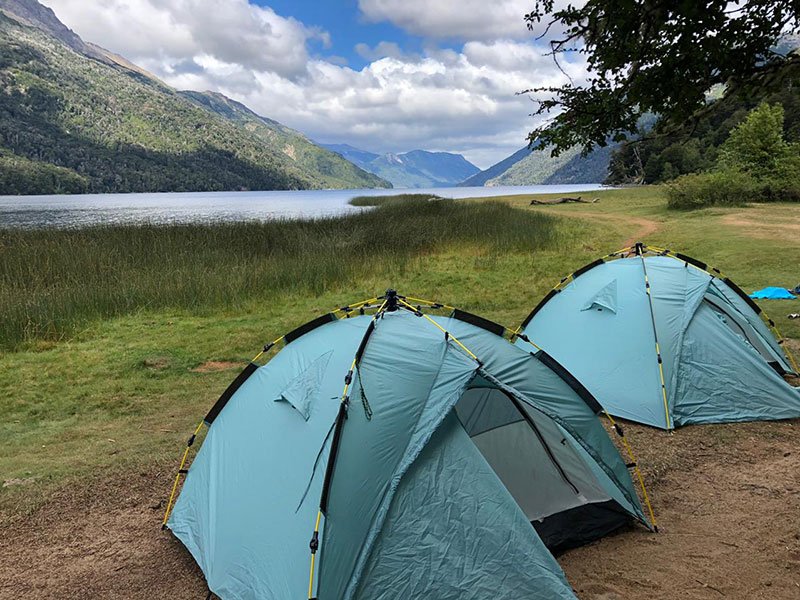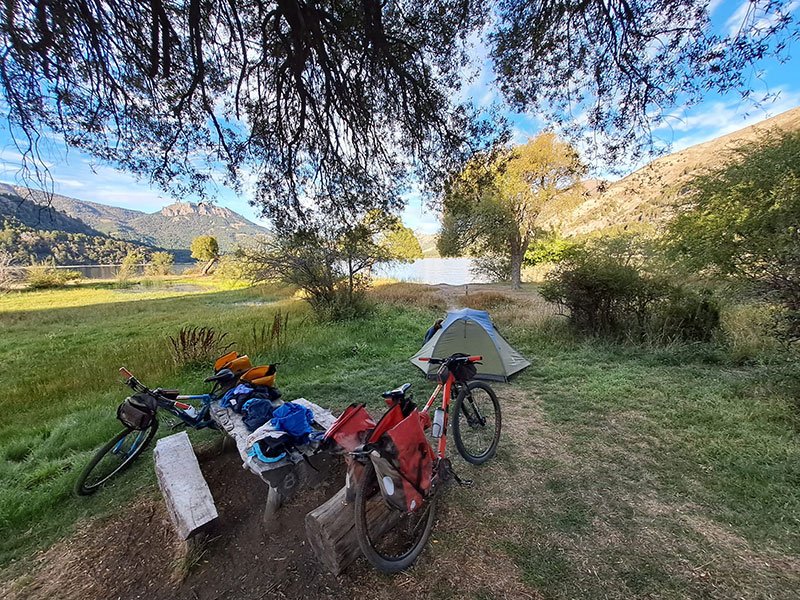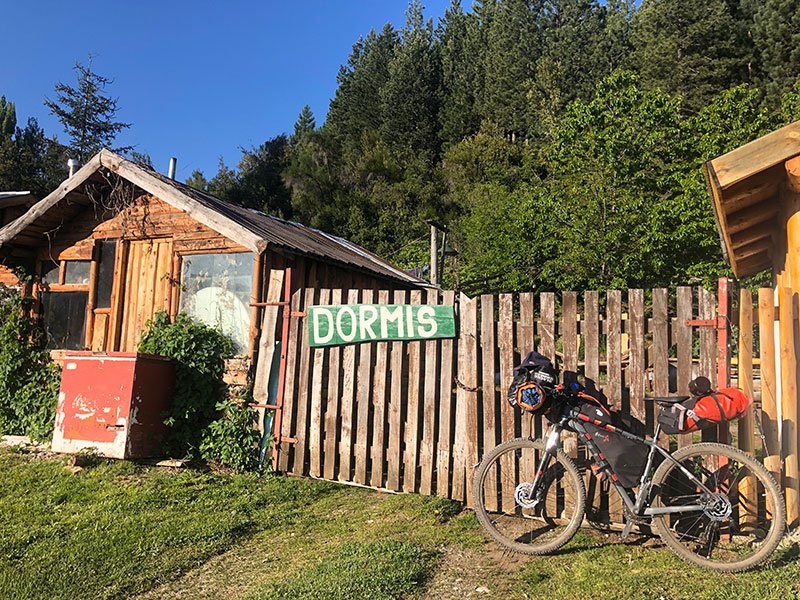This is the first question that comes to mind when we start planning a cycling trip. Below we list the advantages and disadvantages of sleeping in a tent or spending the night in accommodation while bikepacking. At the bottom of this section, you will find a map of campsites, cabins, hostels, inns, sleepers and domes. Located on the road of the 7 lakes and route 40 of Argentine Patagonia.
WHERE TO SLEEP WHILE BIKETOURING PATAGONIA?
WHERE TO SLEEP WHILE BIKETOURING PATAGONIA?
CAMPSITES, HOTELS AND CABINS ON THE ROUTE OF THE 7 LAKES AND ROUTE 40 IN ARGENTINA
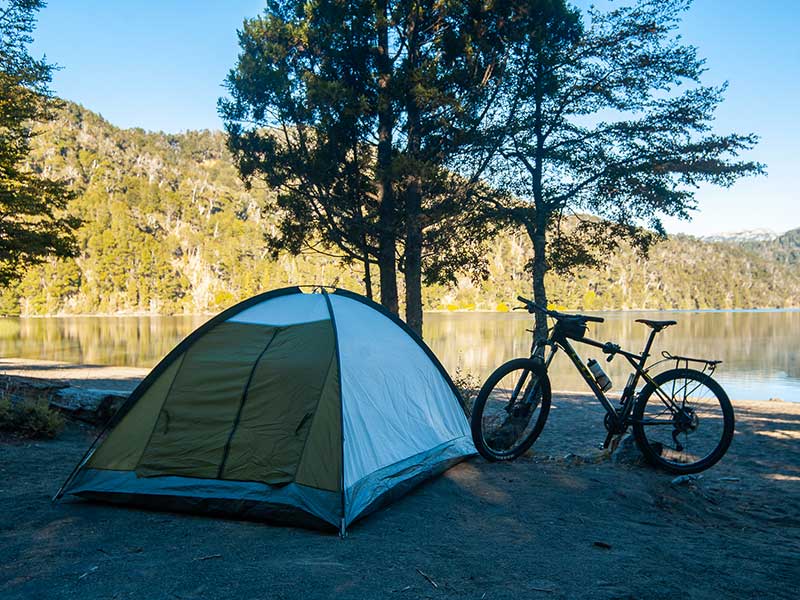
Foto: 7 lagos classic
Inn or tent? Considerations when choosing accommodations for a bicycle trip
The decision to sleep in a tent or in hotels will largely depend on your budget and personal preference. However, you might not always find convenient accommodation at every stage. There are many factors, such as climate, or lack of hotels, that will determine the place where to sleep.
Usually, short cycling trips along touristy roads allow us to book hotels with ease. Consider bringing a tent if you are going on a long trip, as it is difficult to accurately calculate breaks and you may not find appropriate shelter at the end of each day.
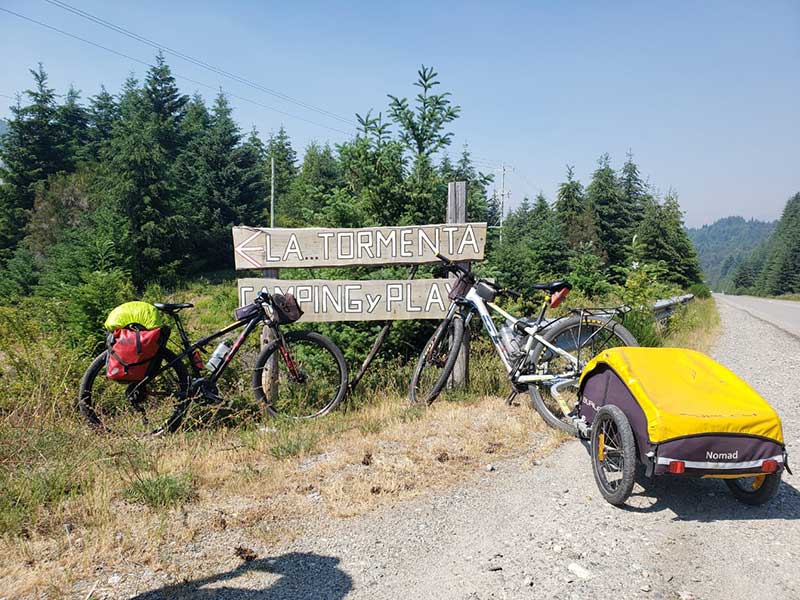
Photo: Bariloche a Esquel x los Alerces
SLEEPING IN A TENT - ADVANTAGES
1– It is the cheapest lodging. Campsites are paid per person, on the other hand, cabins and sleepers must be payed entirety and usually have 4 or more beds that you will have to pay for, even if you do not use them. Therefore if you travel alone or in two it is very convenient to sleep in a tent. There are even some free camping or wild camping areas where you can sleep without spending a penny.
2– You will experience the true essence of biketouring. Carrying your tent will give you freedom, flexibility and autonomy, benefits that you will not have if you stay in cabins. You can also change plans on the fly, without losing reservations or accommodations you already paid for.
3– Sleeping meters from a lake on a sandy beach, or under the stars can only be experienced in a campsite with a tent. The best spots inside the campsites are reserved for tents, and campsites with privileged locations usually don’t have cabins.
4– Natural áreas and national parks have more campsites tan cabins. Taking a tent will give you flexibility when organizing the trip. In addition, campsites always have room for a tent, and it is not necessary to make reservations. Cabins are usually full in high season and must be booked in advance.
5– If things get complicated and you cannot reach your destination for that day, you can set up your tent and rest. No problem. You have everything you need to get through that moment. A tent is like a life insurance on a bicycle trip.
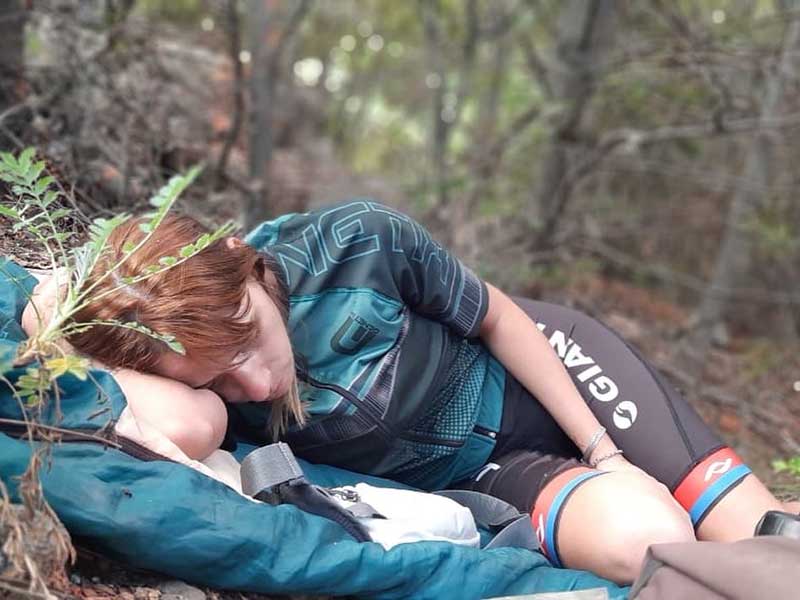
Photo: Traful por Arrayanes
SLEEPING IN A TENT – DISADVANTAGES
1– You will carry more weight on the bicycle (2kg of tent and 1kg of sleeping bag and sleeping mat)
2– Sleeping on the floor with a mat can be uncomfortable for many people, especially if you have to do it for 4 or 5 days in a row.
3– Persistent rains at night or strong winds can complicate you a lot. It is essential to check the forecast before departure. We recommend the tent if you are going to travel in December, January or February, which are the driest and hottest months in Patagonia.

Photo: Traful por Arrayanes
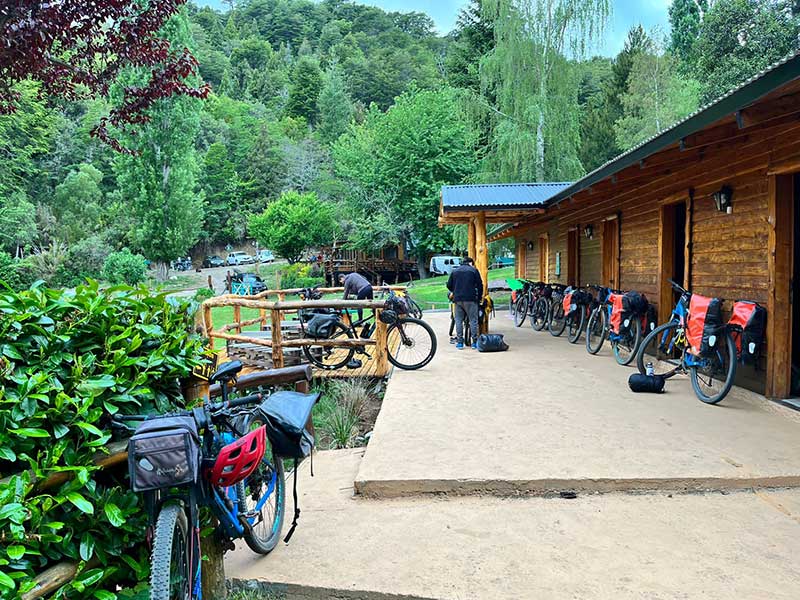
Photo: Travesía del Manso
SLEEPING IN CABINS - ADVANTAGES
1– Clearly the comfort of a bed is something that many people seek, especially after making a lot of physical effort during the day.
2– Some cabins may have fire stoves and are generally warmer than a tent.
3– You carry less weight on the bike
4– If you travel with a group of 4-5 people, the cost per person of a cabin is not that high. In this case, it might be convenient to choose this option.
5– During cold or rainy months, having a roof at the end of the day is convenient to recover temperature and dry equipment and clothing. These months are usually during early spring and late fall. We recommend hiring cabins during October, November or April.

Photo: 7 lagos por Arrayanes
SLEEPING IN CABINS – DISADVANTAGES
1– It is necessary to book in advance and plan your trip well, calculating the daily distances to meet the schedule.
2– The cabins are expensive, they do not usually have a lake shoreline, nor are they usually located in such privileged places as the campsites. Some lodgings do not take reservations for a single night.
3– There are fewer options and it is hard to find a place during high season (January and February)
4– It is difficult to get the phone numbers and location of these cabins. That being said, here is a list of valuable contacts for hostels, sleepers, cabins and domes throughout the region, to make your accommodation search easier.

Photo: 7 lagos por Arrayanes
MAP OF CAMPSITES, INNS AND CABINS ON THE ROUTE OF THE 7 LAKES AND ROUTE 40 IN PATAGONIA ARGENTINA
Find campsites, cabins, hostels, inns, sleepers and domes. Located on the route of the 7 lakes and route 40. In the towns of San Martin de los Andes, Villa la Angostura, Villa Traful, Villa Llanquín, Bariloche, Llao Llao, Tronador area, Valle del Manso, El Bolsón, los Alerces National Park and Esquel.
Click the icons to see reviews, photos and contact information.
Download the accommodation map in .GPX or .KML format
Accommodation list and contact information
Inn to inn biketouring guides


